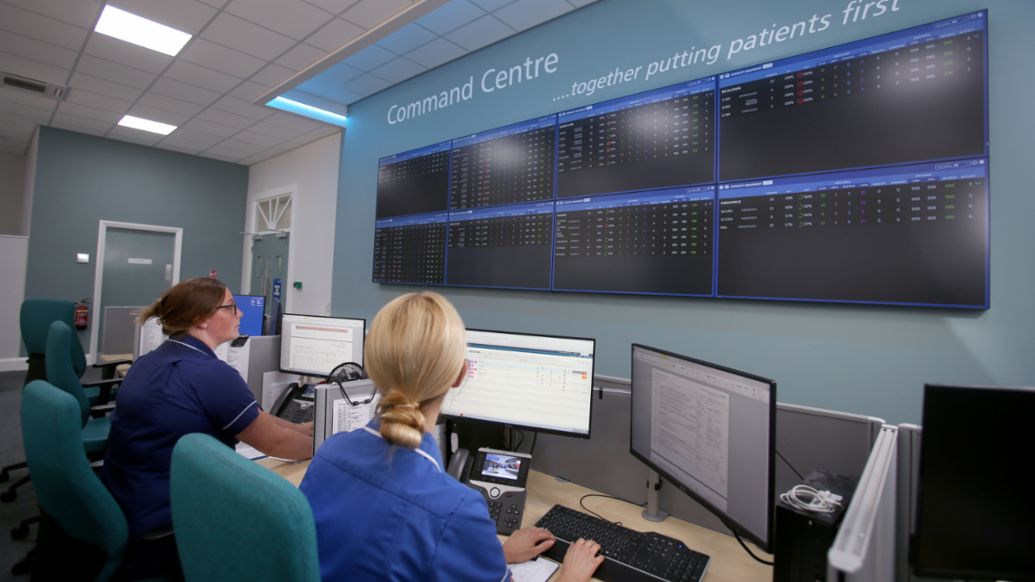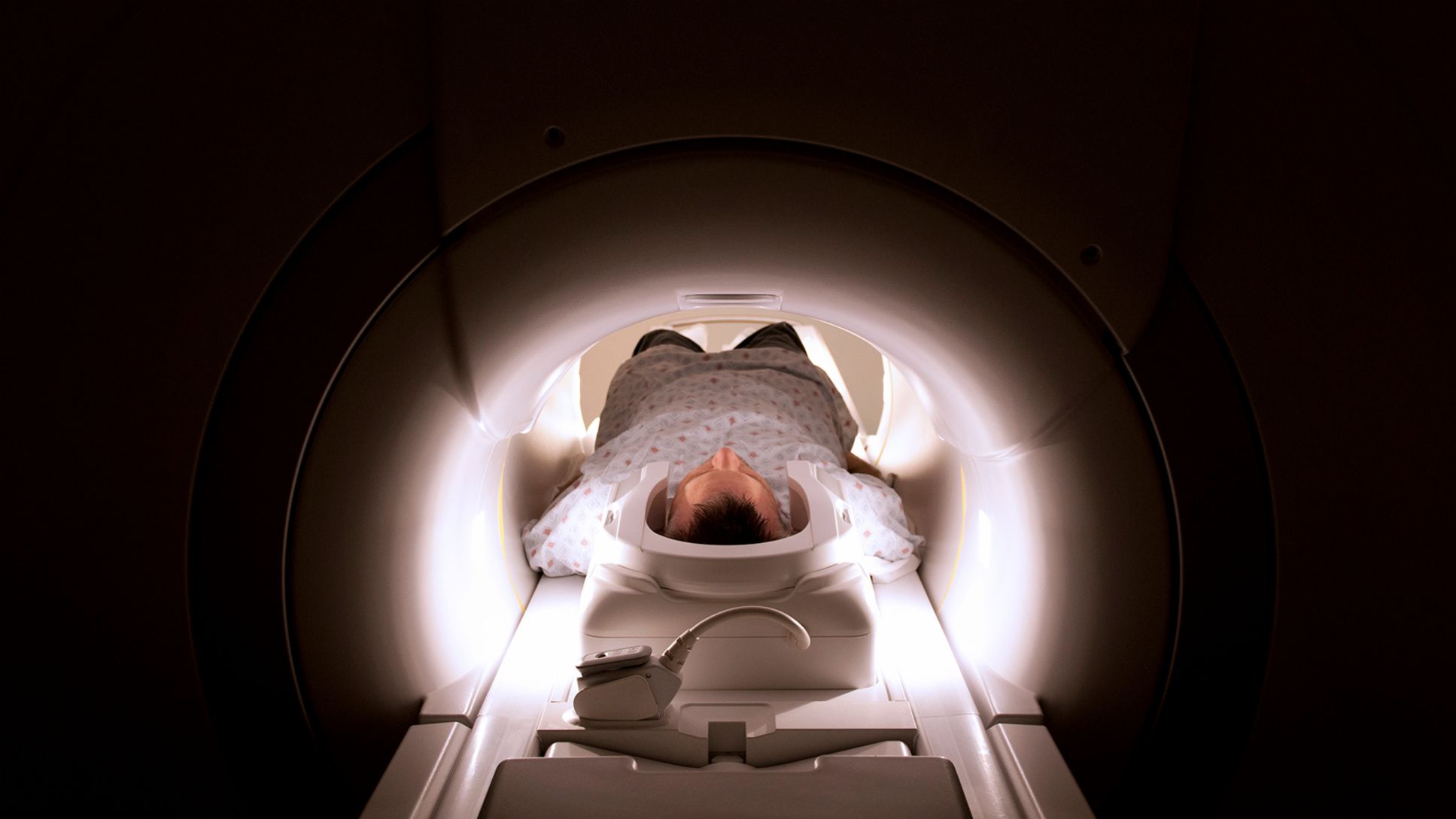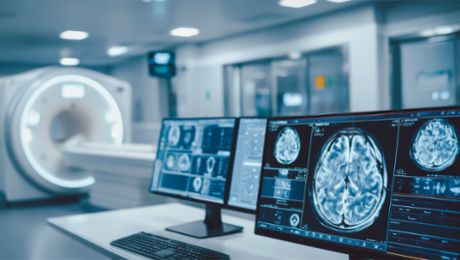They were ahead of their time. A small group of IT specialists, designers, students, and founders took three days out of their normal routines for an intense round of discussions and programming, hardly bothering to sleep. Together they came up with the idea for an app that could make many people safer during an epidemic. This app allows medical appointments to be organized so as to limit the time spent in waiting rooms—and thus the time that patients spend in close proximity to other people. The idea was tailor-made for the challenges that arrived with the coronavirus. Yet it was developed in September 2019, months before the virus appeared on the scene.
The app was the brainchild of participants in a hackathon in Munich. Hundreds of talented young people gathered there to seek solutions to problems posed by a number of companies. The task of “doing away with waiting rooms” came from GE Healthcare. This subsidiary of the U.S.-based General Electric corporation has been placing an ever-greater emphasis on promoting the digital transformation in healthcare, and the app is just one example of how that strategy can pay off in the pandemic.
Telework for hospital physicians
With around 50,000 employees at locations in more than 160 countries, GE Healthcare develops technical solutions and services for the healthcare sector. “There is a huge demand for digital innovations in this industry,” says Jan Beger, General Manager Digital at GE Healthcare. “We’re now in a position to offer a wide range of solutions. The Covid-19 crisis has shown that digital solutions provide significant benefits to healthcare systems in an epidemic.” That’s because many digital innovations offer not only greater convenience and efficiency, but also help to protect doctors and patients—because they can reduce the amount of physical contact.
“We need to use this pandemic to accelerate the digital transformation in healthcare.” Jan Beger
Some solutions apply primarily to medical personnel, such as the ability to examine radiological results remotely. For example, CT scans can be transferred digitally from one medical department to another—or from one hospital to another. Doctors no longer have to hold a physical copy of a scan or a compact disc with the data in their hands. “The great thing about our solution is that it’s compatible with nearly all of the systems used by hospitals,” says Mathias Goyen, Chief Medical Officer at GE Healthcare. “If radiologists have a high-resolution screen at their home, they can easily do their diagnostic work there.” Telework for hospital physicians. Some medical centers have already been very successful at using such means to deal with the restrictions regarding contact.
Central access to all data
Another extremely important issue during an epidemic is that of ICU capacities. Thus far, only the personnel at the units themselves have known how many beds are occupied and for how long. “When doctors need a bed, they usually call up the nurses’ station and ask,” says Goyen, who is also a professor of diagnostic radiology at Hamburg University. Even if hospitals make capacity data available, key details are often missing, such as whether beds are reserved for people scheduled to arrive the next day, or whether patients have been discharged earlier than originally planned.

GE Healthcare’s Command Center system evaluates all of this information automatically. “It’s similar to the command center for a NASA mission, and it’s an optimal way to control patient flows,” says Goyen. Immediately following the outbreak of the pandemic in Germany, GE Healthcare adapted a version of the software for the Covid-19 situation. Within two weeks, it was compatible with virtually all hospital interfaces. Not only that—it could be installed entirely remotely, so there was no need for computer technicians to actually enter the facilities. In just four weeks, more than 150 clients worldwide were using the system. It not only helps treat patients more promptly, but also protects nurses and doctors—and thereby the patients as well. “A crucial part of keeping a healthcare system in good shape is making sure that its personnel remain healthy,” observes Goyen.
Corona drives developments
GE Healthcare is also developing ever more digital solutions that prioritize direct benefits for patients. “Patients have far too rarely been viewed as customers with the associated needs. Healthcare has been lagging behind other sectors in this regard,” says Goyen. “Digitalization offers a prime opportunity to change this in a lot of areas.” For example, patients are currently handed a number of densely written documents in preparation for complex treatments. But chatbots could take on the job of providing detailed information about the procedures. These digital assistants could also remind patients about dietary restrictions before certain appointments. Goyen sees a shift in the attitudes of physicians as well. “The physician-patient relationship is changing,” he notes. “Patients are becoming more sophisticated. They’re using rating portals, for example, to gather precise information and choose exactly the right physicians for their needs.” Hospitals and medical offices should make use of this opportunity to become more customer-oriented and thereby acquire a competitive edge. “We make products for doctors, but ultimately these products should always serve the patients.”
“Patients are becoming ever more sophisticated. This is an increasingly key focus of product development.” Professor Mathias Goyen
That is the case with the waiting room app conceived at the hackathon in Munich. It is intended to allow patients to send data to medical offices before their appointments, or to be notified in real time of delays. The app could complement a product that GE Healthcare has already developed: its Smart Scheduling app. This system considers multiple factors that influence whether patients will keep their appointments, such as: How far does the patient live from the doctor’s office? What weather conditions are forecast for the day? Has the patient canceled appointments at particular times of the day before? An algorithm generates dates and times that match the patient’s preferences. This improves doctors’ abilities to plan—and also helps ensure that waiting rooms are less crowded. The app is expected to be used for the first time at doctors’ offices this summer. Sparsely populated waiting rooms then will not only help patients feel more relaxed, but also protect their health.
“If the pandemic had broken out two years earlier, the situation would have been much more challenging,” says Beger. “The past several weeks have shown that there are a lot of opportunities to be had from digitalizing healthcare. That gives me hope for the future.” The coronavirus, he says, is helping to accelerate these developments.
Marathon for Hackers
GE Healthcare’s development of digital innovations also makes use of innovations in the development methods themselves. These include hackathons, at which teams of individuals from a variety of disciplines develop solutions to specified challenges within limited periods of time. The idea for an app that would reduce the time spent in waiting rooms came from the TECHFEST hackathon in the fall of 2019, organized by Munich’s UnternehmerTUM center for innovation and start-ups. Hackathons are not only a good way to develop products, says Jan Beger, General Manager Digital at GE Healthcare. “They also teach us how agile and self-organized teams can achieve results quickly and effectively. We apply the knowledge we gain from them to our own processes.”





